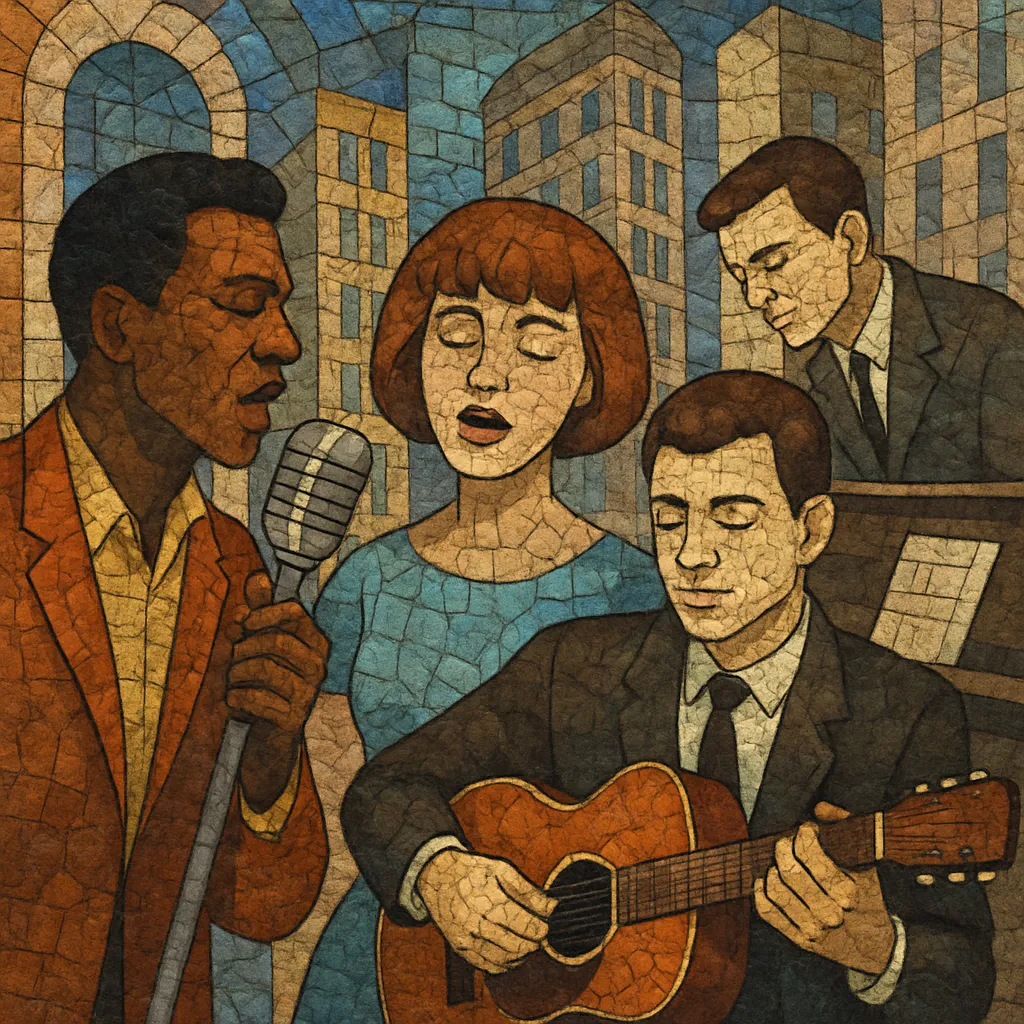
Brill Building is a style of polished, hook-driven pop music crafted by professional songwriting teams and producers centered around New York City’s Brill Building (1619 Broadway) and nearby 1650 Broadway in the late 1950s and early 1960s.
It blends Tin Pan Alley songcraft with rhythm & blues grooves, doo-wop harmonies, and rock and roll energy, resulting in concise, radio-friendly singles often aimed at teen audiences.
Typical traits include strong melodic hooks, AABA or verse–chorus forms, handclaps and backbeat-driven rhythms, lush arrangements with strings or horns, and lyrics that focus on young love, heartache, and aspiration.
The "factory" model paired lyricists and composers, publishers, and producers with vocal groups or soloists, generating a steady stream of hits for artists like The Shirelles, The Drifters, The Crystals, and The Ronettes.
The Brill Building sound emerged in New York City’s music publishing hub around 1619 Broadway and the nearby 1650 Broadway. Publishers such as Aldon Music (run by Don Kirshner and Al Nevins) fostered teams of young songwriters who wrote daily in office cubicles. This system modernized the Tin Pan Alley model by infusing contemporary rhythm & blues, doo-wop, and rock and roll into tightly crafted pop songs.
Iconic teams—Carole King & Gerry Goffin, Barry Mann & Cynthia Weil, Ellie Greenwich & Jeff Barry, Neil Sedaka & Howard Greenfield, and Doc Pomus & Mort Shuman—wrote hits for artists selected by publishers and producers. Arrangers and studio musicians translated piano-vocal demos into fully orchestrated productions, often with strings, horns, backing vocals, and a driving rhythm section. Producers such as Jerry Leiber & Mike Stoller and, in parallel, Phil Spector helped define the era’s punchy yet lush sound.
Brill Building pop supplied a constant stream of chart singles for girl groups and polished vocal acts, including The Shirelles, The Drifters, The Crystals, and The Ronettes. The songs’ universal themes, memorable choruses, and compact length made them ideal for AM radio and the 45 RPM single market. The approach influenced pop’s industrial organization and cemented the songwriting team as a creative engine.
The British Invasion shifted industry tastes and encouraged bands to write their own material, reducing reliance on publisher-driven hits. Even so, the Brill Building sound directly informed later bubblegum pop, teen pop, sunshine pop, and compact pop-rock songcraft. Alumni like Carole King helped usher in the 1970s singer-songwriter movement, proving the resilience of Brill-era melody, harmony, and lyrical sensibility.
Write concise, radio-ready songs in AABA or verse–chorus form, typically 2:30–3:00 in length. Consider a late key change (often up a semitone) for the final chorus to heighten excitement.
Craft strong, singable hooks with clear melodic contours and memorable titles. Use primarily diatonic harmony with tasteful secondary dominants, circle-of-fifths motion, and occasional borrowed chords to add color. Prioritize stepwise melody balanced with a few leaps for emphasis.
Use a steady 4/4 backbeat with handclaps, tambourine, and a driving but clean drum pattern. Incorporate doo-wop–inspired rhythms or light Latin touches where appropriate. Keep the groove buoyant and danceable without overpowering the vocals.
Start from piano (or guitar) and voice, then expand with bass, drums, electric guitar, and layered backing vocals for call-and-response hooks. Add strings or horns for lift, and consider glockenspiel or subtle percussion for sparkle. Aim for clear, balanced production that spotlights the lead vocal and the chorus.
Focus on universal, youth-centered themes—first love, heartbreak, longing, and optimism. Write in direct, conversational language with vivid emotional cues and strong rhyme schemes. Keep verses compact and build toward a payoff chorus that repeats the title.
Adopt the team approach: pair a composer with a lyricist to iterate quickly and produce piano-vocal demos. Test multiple tempos and keys for the intended singer, refine the hook, and collaborate with an arranger to translate the demo into a full, radio-friendly production.

